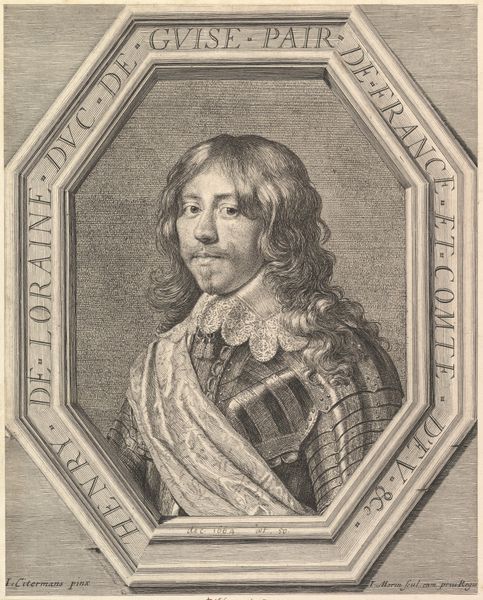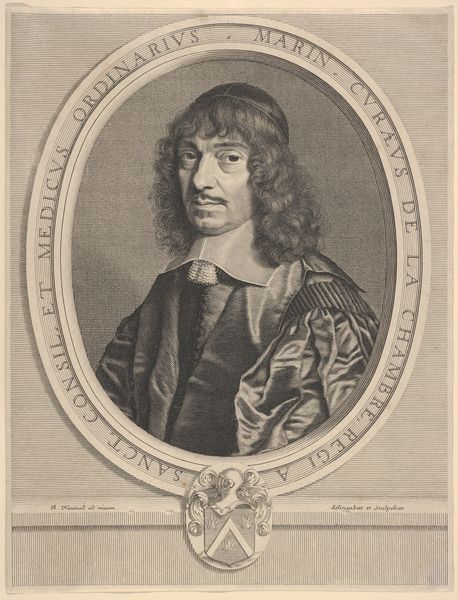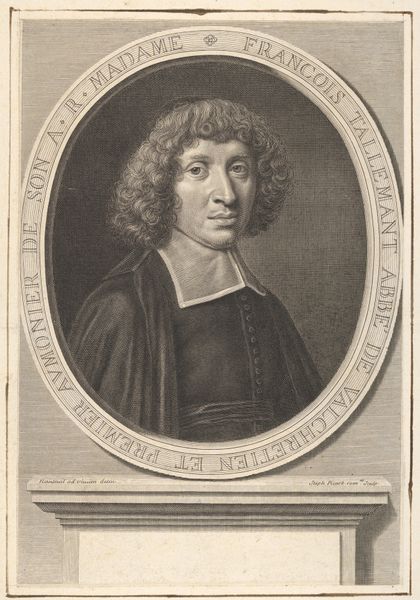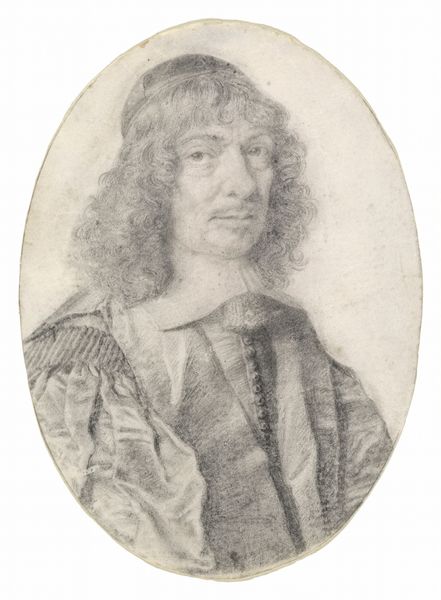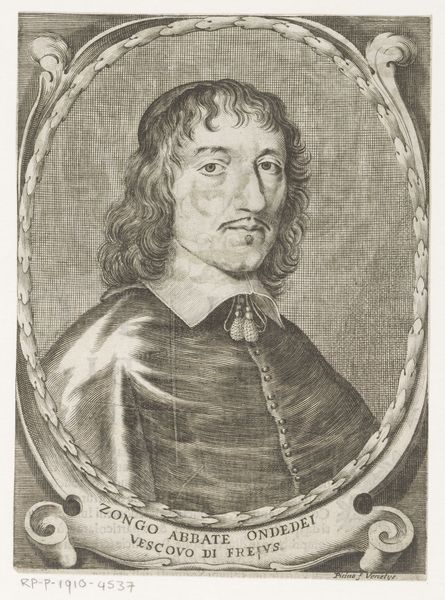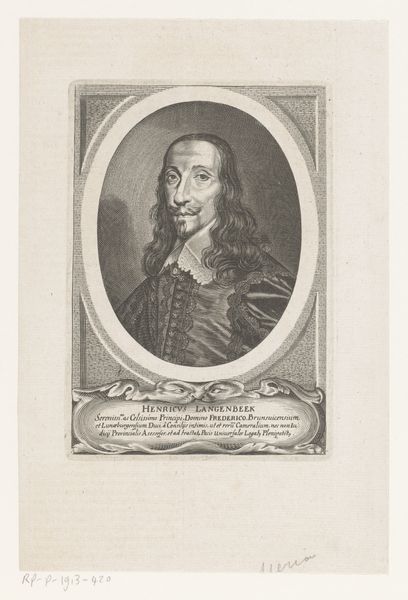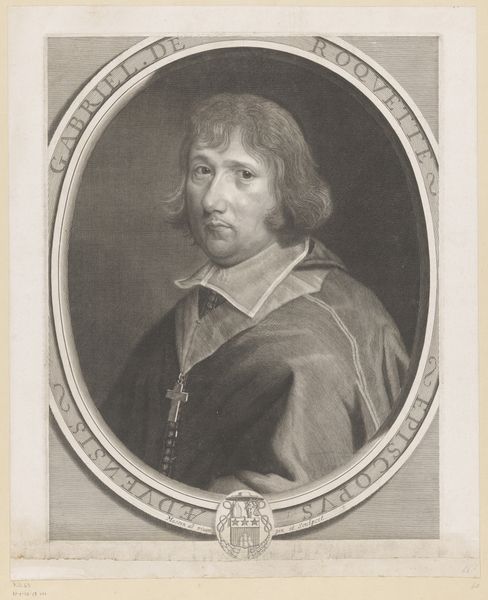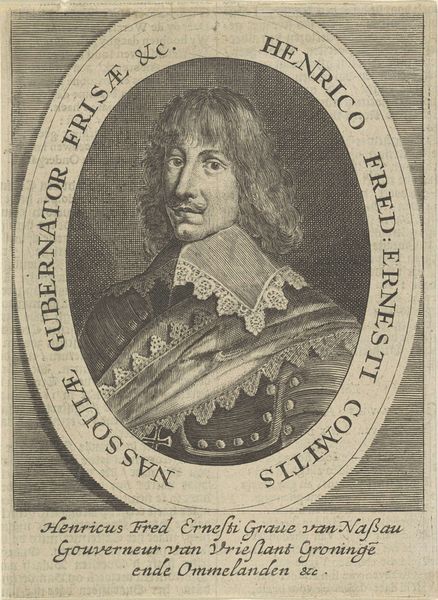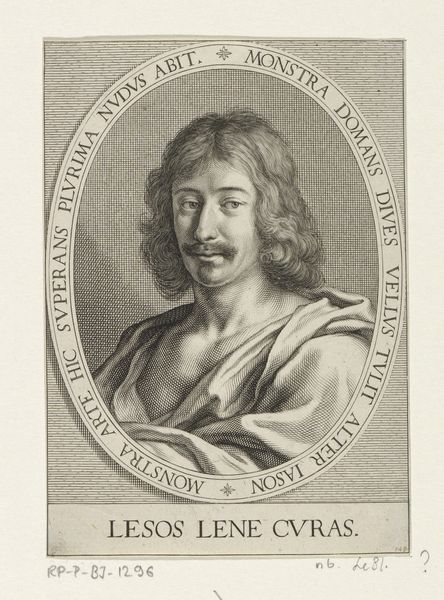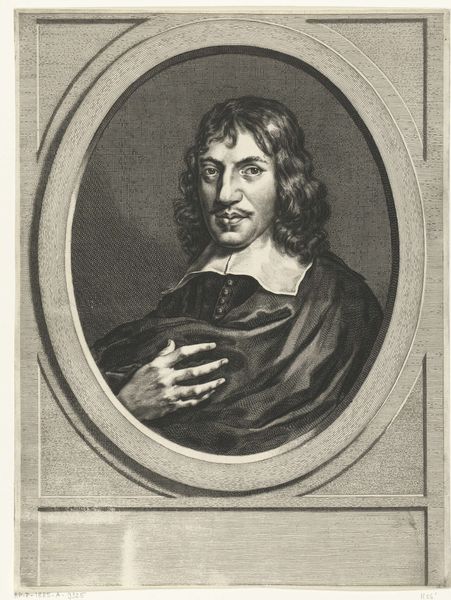
drawing, print, engraving
#
portrait
#
drawing
#
baroque
# print
#
figuration
#
line
#
engraving
Dimensions: Sheet: 5 3/8 × 3 9/16 in. (13.7 × 9.1 cm) Plate: 5 1/8 × 3 5/16 in. (13 × 8.4 cm)
Copyright: Public Domain
Curator: This engraving, "Pierre da Maridat," was created by Robert Nanteuil sometime between 1648 and 1658. The inscription at the bottom in Latin and French is really remarkable. Editor: The linear detail is incredible, capturing such delicacy and texture, even in the depiction of fabric. I’m curious about the paper used, and how the plate was etched for these tonal gradations. It looks almost like a drawing! Curator: Nanteuil was a master engraver. Examining other works reveals similar techniques. The subtle rendering comes from skilled manipulation of the burin, demanding precise labor. Think about the role of printmaking during this time—not as fine art, per se, but an important mode for circulating images of power. Who *was* Pierre da Maridat? And how does this image contribute to constructing and maintaining his social standing? Editor: Right, his status as Senator to the Christian King is emblazoned on the oval framing the portrait, quite literally setting him apart. He looks the part, with the long hair, distinctive mustache, and an intense, direct gaze. It’s interesting to think about how deliberate this crafted image would have been. It's very interesting to consider his appearance and his clothes. What was this Senator telling us through this print, and why? Curator: Absolutely. Nanteuil catered to wealthy elite in Paris and that dictated many artistic choices. We're left to read into those intentional choices, those markers of class and importance. The quality of line and printing indicates a high degree of professionalism in his workshop, from the preparation of materials, through production to consumption of the engraving as a portrait. Editor: Placing this artwork in the context of its socio-political landscape lets us investigate it on multiple levels; we see an individualized man presented by ways and through materials associated with hierarchy. It's fascinating. Curator: Exactly, focusing on that intersection between intention, craft, and distribution allows us to understand this engraving, not only as art but also a carefully considered statement on Pierre da Maridat's identity and a vehicle for the social machine within which he occupied a privileged position. Editor: Looking closer, this image asks more questions than it answers. It makes me want to find out more.
Comments
No comments
Be the first to comment and join the conversation on the ultimate creative platform.


